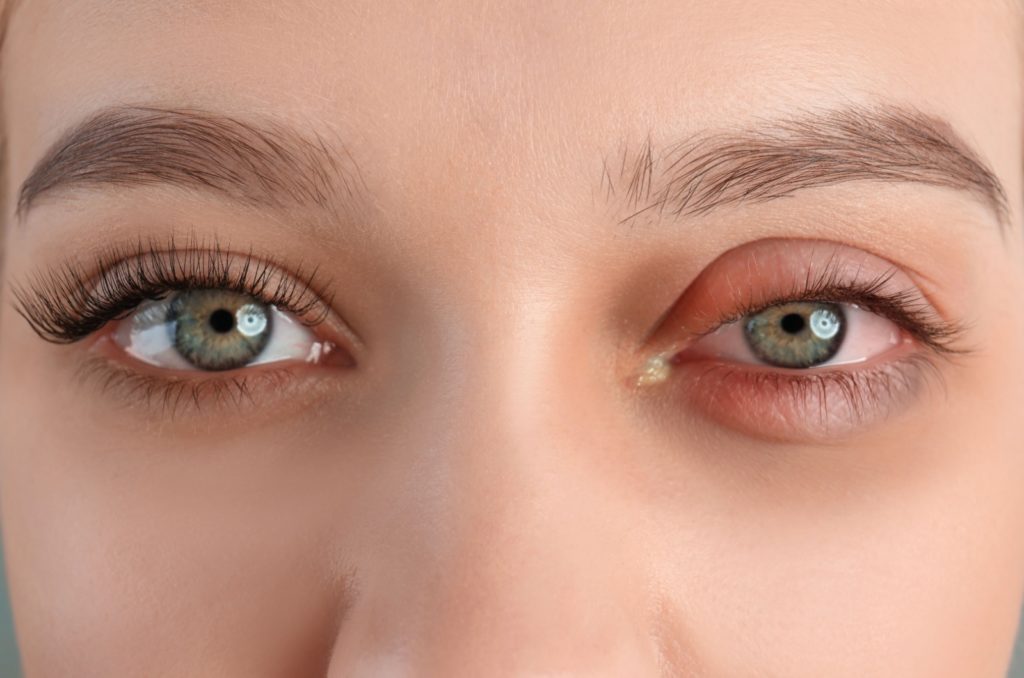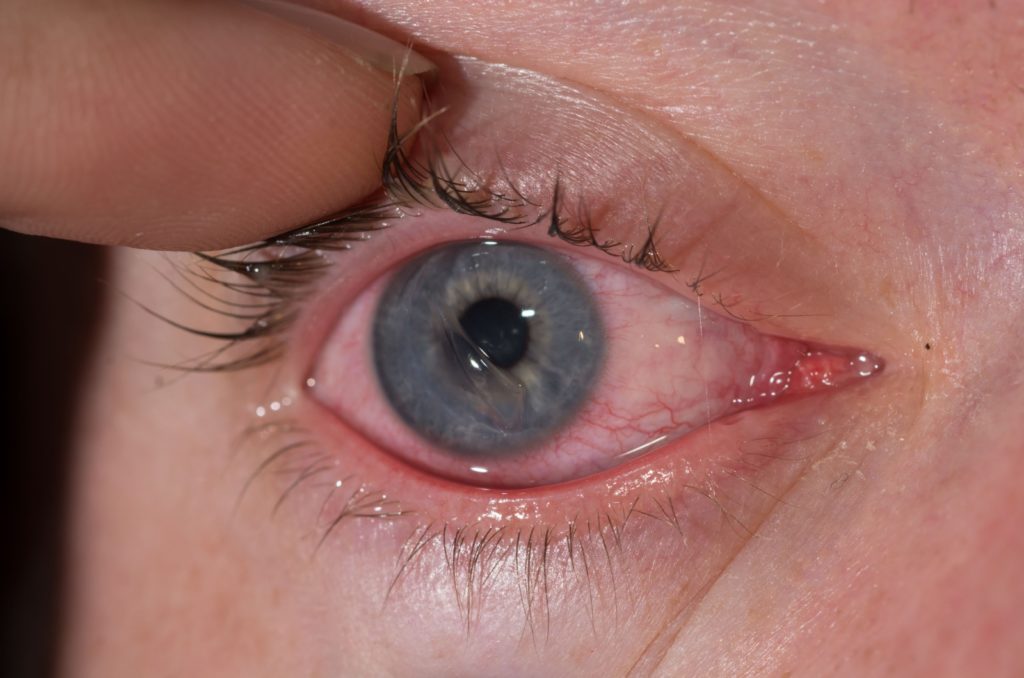Itchy, red, painful, or teary eyes could indicate a problem with several potential reasons causing these symptoms. It can be a scratched cornea or pink eye. But how do you tell the difference?
A scratched cornea and pink eye have different causes and symptoms. A scratched cornea results from physical trauma, while viral or bacterial infections or allergens cause pink eye. An eye exam performed by your eye doctor can provide a proper diagnosis and recommend the right treatment.
What’s a Scratched Cornea?
Your cornea is the clear, dome-shaped surface at the front of your eye that plays a critical role in focusing light that enters the eye. A scratched cornea or a corneal abrasion happens when this delicate surface is damaged.
Common causes of a scratched cornea include:
- Accidentally poking your eye (hands, nails, makeup brushes).
- Rubbing your eye a little too aggressively.
- Foreign objects like sand, dirt, or debris in your eye.
- Overwearing or improperly handling contact lenses.
A deep scratched cornea is usually uncomfortable or painful. Common symptoms can include:
- A persistent feeling of something in your eye (even after you’ve rinsed it out)
- Redness or watery eyes
- Sensitivity to light
- Blurred vision or difficulty focusing
A corneal abrasion can lead to infection and more serious issues if left untreated. For these reasons, seek professional assistance immediately.
What’s Pink Eye?
Pink eye, or conjunctivitis, is an inflammation of the thin tissue (conjunctiva) lining the inside of your eyelid and covering the white part of your eye. Mild cases of pink eye can resolve on their own, however, sometimes, you may need treatment.
Common causes of pink eye include the different types:
- Viral: Viral infections are often linked to colds or upper respiratory infections.
- Bacterial: Pink eye is linked to a bacterial infection.
- Allergic: Allergens like pollen, pet dander, or dust.
- Chemical: Contact with irritants like chlorine, smoke, or even makeup.
Pink eye typically has a gradual onset compared to a scratched cornea. You might notice the following symptoms of pink eye:
- Redness around the white part of your eye or inner eyelid
- Itching or burning
- Swelling eyelids
- Discharge that crusts over, especially in the mornings
- Tearing or watery eyes
- Sensitivity to light
- Blurry vision

Scratched Cornea vs. Pink Eye—Spot the Differences
While both scratched corneas and pink eye can leave you with red, uncomfortable eyes, some key differences can help you discern one issue from the other:
- Onset: A scratched cornea occurs suddenly, often after an eye injury, while pink eye is gradual and may start with one eye before spreading to both.
- Symptom severity: You can experience sharp pain or consistent discomfort in a scratched cornea and mild discomfort, itching, or burning with pink eye.
- Discharge: There’s no discharge in a scratched cornea, while pink eye has a discharge, which can be yellow or green.
- Feeling of debris: In a scratched cornea, there’s a strong sensation of something in the eye, while with pink eye, there’s irritation.
- Contagious: A scratched cornea isn’t contagious. Viral and bacterial forms of pink eye are highly contagious.
When to Seek Medical Attention
When your symptoms overlap or worsen, it’s always better to seek professional advice. Avoid rubbing your eye in a scratched cornea, which can exacerbate the injury. See your eye doctor immediately if your pain is severe or if it doesn’t resolve.
For pink eye, see your eye doctor if the redness and discharge persist or worsen. If you experience blurred vision, significant pain, or swelling, an eye exam can confirm the diagnosis and get you the right treatment, whether it’s prescription eye drops, ointments, or other recommendations.
Tips to Prevent Scratched Corneas & Pink Eye
While accidents and infections can happen, there are steps you can take to protect your eyes from a scratched cornea or pink eye. Here are some prevention tips.
To prevent a scratched cornea:
- Be mindful when applying makeup or inserting contact lenses.
- Wear protective eyewear during activities like sports, woodworking, or gardening.
- Avoid rubbing your eyes if debris gets in—rinse instead.
To prevent pink eye:
- Practice good hygiene—wash your hands often
- Don’t share towels or makeup.
- Avoid touching your eyes, especially in shared spaces or with unwashed hands.
- Keep your contacts clean, and replace cases as directed by your provider.
- Avoid allergens.
Preserve Your Vision & Eye Health
A scratched cornea and pink eye are common eye issues, but they can affect your vision and cause discomfort if not addressed. You can avoid complications, receive the right treatment, and find symptom relief by recognizing the overlapping and differentiating signs of a scratched cornea and pink and acting early.
An eye exam is essential if you experience vision changes or have concerning symptoms. Book an appointment with Dr. Henslick Vision Center and stay on top of your vision and eye health.




